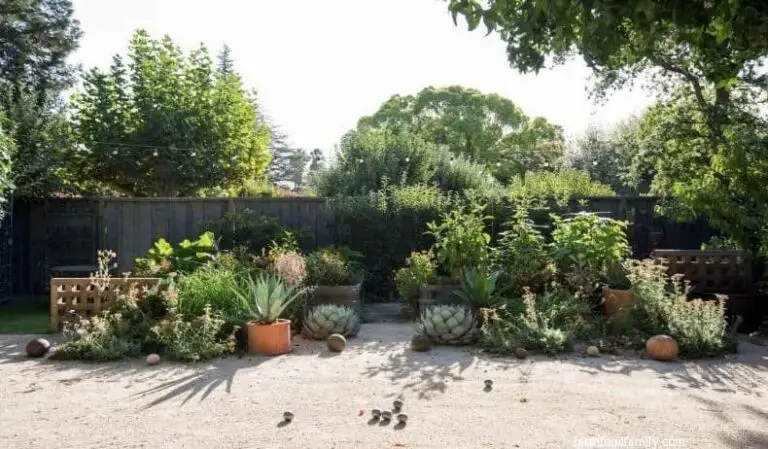20 Invasive Weeds With Purple Flowers: A Comprehensive List
Invasive weeds boasting purple flowers are a widespread issue across various landscapes, posing a significant threat to native plant populations and ecosystems. Their hardiness and rapid growth enable them to spread quickly if left unmanaged. As they outcompete native species for essential resources like sunlight and water, the natural balance is disrupted. Furthermore, these unwanted plants can harm other flora and fauna, making it crucial to recognize and control invasive weeds to protect native plant diversity and maintain ecological harmony.
20 Common Invasive Weeds With Purple Flowers
Canada Thistle
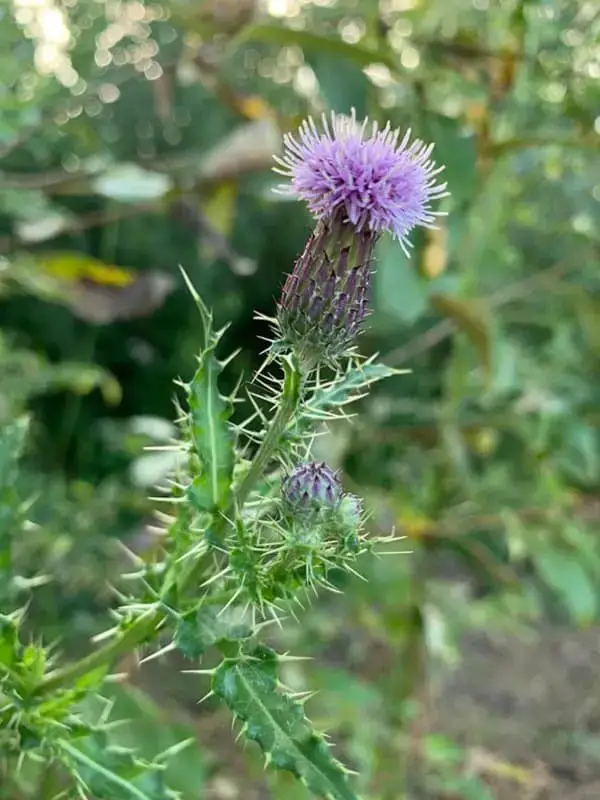
Cirsium arvense (L.) Scop., commonly known as Canada thistle, is a highly invasive and aggressive weed native to Europe. Its introduction to North America dates back to the 1600s. This plant’s remarkable ability to produce seeds in abundance, combined with its capacity to spread through both seed dispersal and root systems, has enabled it to establish itself with remarkable speed.
The life cycle of Canada thistle begins with small rosettes that emerge as seedlings in the fall or early spring. These rosettes gradually develop into mature plants, which produce purple flowers between late June and August. The leaves of this plant are characterized by their lance-shaped morphology, featuring irregular lobes and wavy toothed margins in an alternating pattern.
One of the most distinctive features of Canada thistle is its seed heads, which transform from purple to fluffy white in mid-July. This change marks a critical point in the plant’s life cycle, as it signals the onset of seed dispersal and further propagation.
Red Clover
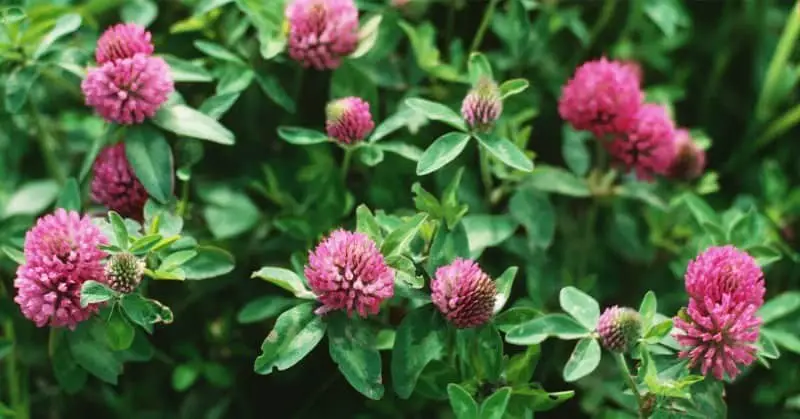
Trifolium pratense, commonly referred to as Red clover, is a pervasive invasive species that has taken root across much of the country, earning its place as a major concern for farmers. Despite its reputation as a nuisance, this legume possesses numerous benefits that make it a valuable resource for both humans and livestock. For instance, Red clover has been shown to possess medicinal properties, effectively treating conditions such as whooping cough, cancer, skin inflammation, and eczema in humans. Additionally, the plant serves as a nutritious feed source for cattle and other animals, sparking debate over whether its invasive nature outweighs its advantages. While it does compete with native vegetation for resources, Red clover’s many uses have solidified its place on this list, making it an interesting case study in the balance between utility and nuisance.
Musk Thistle
Carduus nutans L., also known as Musk thistle, is a perennial weed that thrives in specific regions of Washington State. Its unique characteristics include its ability to grow up to 7 feet tall and produce an impressive amount of seeds, exceeding 20,000 per plant. The plant’s growth habits are characterized by its spiny stem and hairy texture, which can reach maturity in the second year. It typically inhabits areas with full sun and moist soil conditions, often found along roadways, agricultural fields, and disturbed environments. Its rapid spread and prolific seed production make it a significant invasive species that can have devastating effects on meadows, pastures, and other forage species.
Purple Prairie Clover
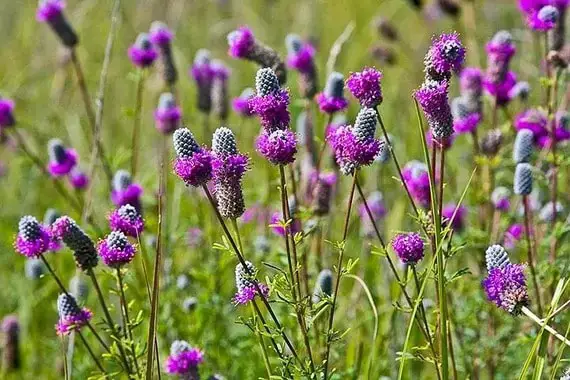
Dalea purpurea, commonly known as Purple Prairie Clover, boasts an impressive resilience in the face of adversity. This hardy weed has evolved unique adaptations that enable it to flourish in arid environments, earning a USDA zone rating of seven to ten. Its robust nature allows it to thrive in dryer areas, where other plants might struggle.As a vital component of its ecosystem, the Purple Prairie Clover’s rich purple flowers serve as a critical food source for hummingbirds, bees, and other insects. This not only supports local biodiversity but also underscores the importance of preserving these natural habitats.Beyond its ecological significance, Dalea purpurea also holds agricultural value. As pre-cultivation plants, farmers utilize its rhizobia, nitrogen-fixing bacteria that enrich the soil, providing an organic alternative to synthetic fertilizers. This innovative approach not only promotes sustainable farming practices but also contributes to a healthier environment.
Purple Dead Nettle
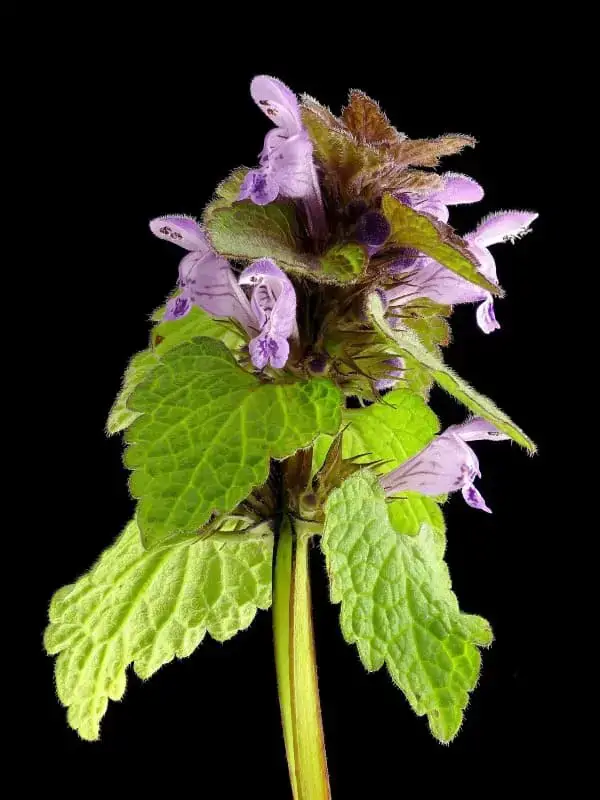
Lamium purpureum, also known as purple dead nettle, is a hardy perennial that originates from Europe and Asia. Its bi-annual blooming cycle typically occurs during the summer and winter months, producing clusters of vibrant purple flowers rich in nectar. These blooms serve as a vital attractant for bees, insects, and hummingbirds when they emerge.
As a resilient weed, purple dead nettle is adaptable to various soil conditions, thriving best in well-drained and slightly moist environments. This adaptability makes it relatively straightforward to control through conventional methods like plowing and mulching.
Ground Ivy
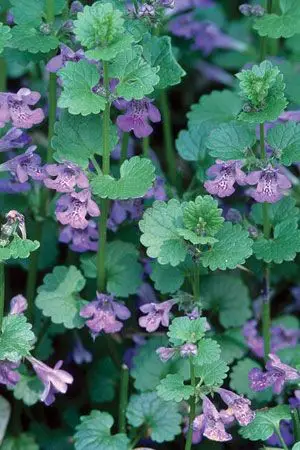
Ground ivy (Glechoma hederacea) is notorious for its remarkable resilience, making it a formidable foe in the battle against unwanted vegetation. Its rapid spread and ability to thrive under even the most challenging conditions have earned it a reputation as one of the most difficult weeds to eradicate. The plant’s unique flower structure features lobed petals that add to its distinctive charm.
Despite their status as pesky invaders, ground ivy plants play a crucial role in supporting other species. Their roots are rich in rhizomes, which have the remarkable ability to fix nitrogen in the soil, making them a valuable asset for local ecosystems.
But ground ivy’s utility extends beyond its ecological significance. The plant can be used in culinary applications, such as adding it to salads or cooking it like spinach. Its leaves possess anti-inflammatory properties, which may help alleviate swelling and welts, offering potential therapeutic benefits.
Forget-Me-Nots
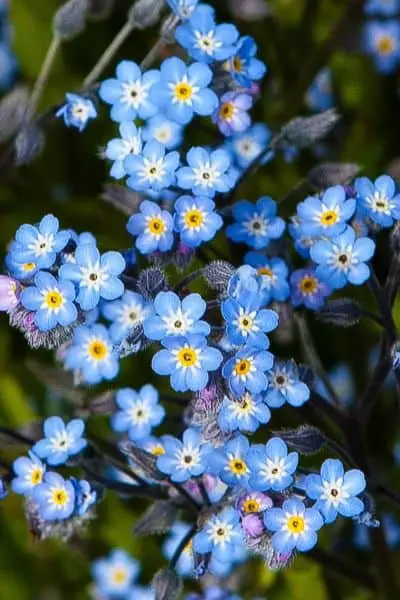
The Myosotis sylvatica, commonly referred to as Forget-Me-Nots, are a popular choice among gardeners due to their visually appealing nature. However, if left unattended, these weeds can quickly spiral out of control, requiring regular trimming to maintain their desired shape. To effectively utilize these versatile plants, it’s essential to actively manage them, as they have a tendency to spread rapidly. Despite being considered ‘weeds’, Forget-Me-Nots prove to be incredibly useful, with applications extending beyond the garden. In fact, they’re often utilized in the bakery industry to add flavor and texture to cookies and cakes. Additionally, they can be infused into tea, where their unique properties enhance the beverage’s taste.
Black Nightshade
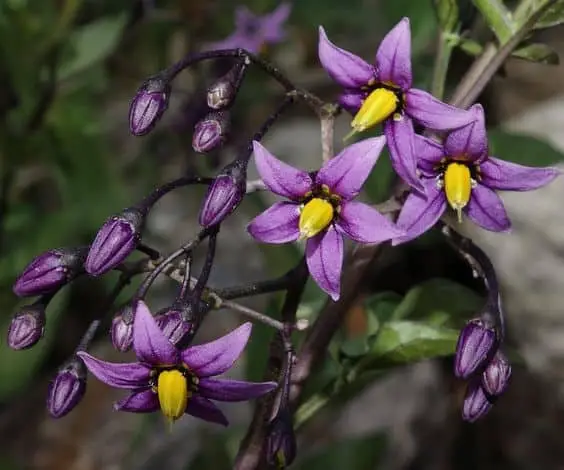
The black nightshade, scientifically known as Solanum nigrum, is a seasonal herb that emerges in the spring only to wither away by winter’s chill. One of its defining characteristics is apical dominance, which can pose a threat to smaller plants by depriving them of essential nutrients. This tendency can have far-reaching consequences for the overall ecosystem.
While the black nightshade may be viewed as a nuisance, it is surprisingly easy to manage. A simple layer of mulch and a bit of digging should suffice in keeping its spread under control. Additionally, chemical weed killers are effective in eliminating the problem altogether.
It’s worth noting that the black nightshade is toxic in nature, offering no proven medicinal or culinary uses. However, given the right conditions, it can grow quite tall, making it a noticeable presence in any environment.
Canada Thistle
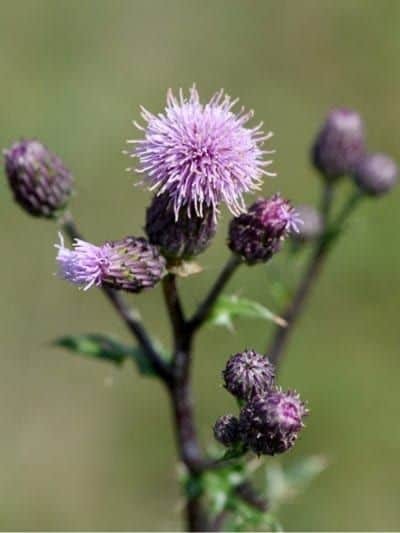
The Canadian Thistle, scientifically known as Cirsium arvense, is a woody plant that boasts pine-shaped flowers which exhibit rapid growth during the summer months. Its unique characteristics render it challenging to eradicate. The plant’s seeds, resembling dandelions, enable it to spread swiftly and efficiently. Additionally, its anchor roots make conventional uprooting methods ineffective. While often viewed as a nuisance, the Canadian Thistle has been recognized for its medicinal properties. Indigenous peoples have long employed the plant to alleviate stomach discomfort. Furthermore, the leaves are edible and can be consumed without cooking, making it a valuable resource in certain contexts.
Bull Thistle
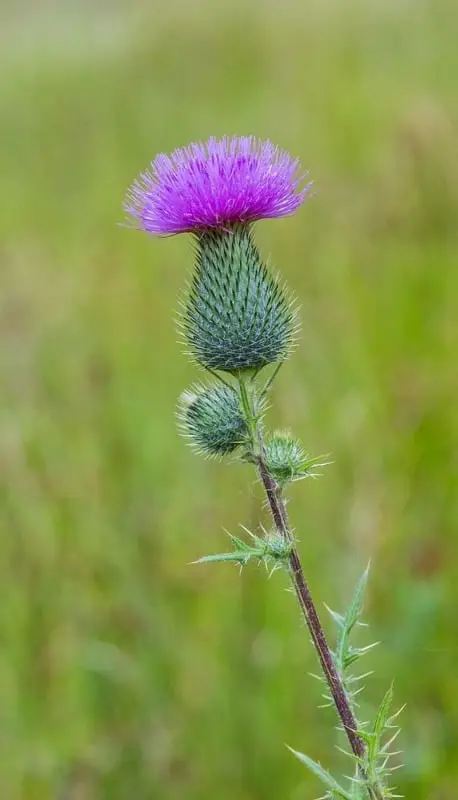
Cirsium vulgare, also known as the bull thistle, is a ubiquitous species that stands out due to its distinctive appearance. The plant’s most striking feature is its rich purple flowers clustered at the tip of a prickly, spherical structure. This unusual morphology sets it apart from other thistle species.One of the challenges in controlling the growth of this plant is its reliance on wind pollination. As a result, it can spread rapidly if left unchecked, making it even more difficult to regulate its spread given the attractive nature of its vibrant flowers, which draw in butterflies and other insects.Interestingly, the bull thistle has some medicinal properties; it has been used to treat stomach issues.
Henbit
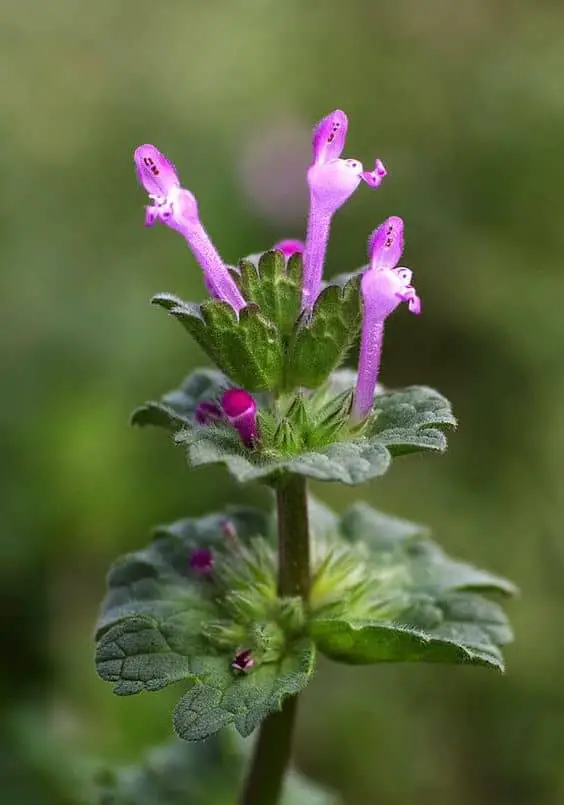
Lamium amplexicaule, commonly referred to as henbit, is a distinct flowering weed characterized by its hairy flowers. This adaptable plant is capable of thriving in various climates due to its unique adaptations. In contrast to many other weeds, henbit does not spread rapidly, making it a more manageable option. Typically, the weed grows better in ponds and other moist areas.
One of the notable advantages of henbit is its ease of management. Conventional methods such as uprooting and spraying can be effective in controlling the plant’s growth. Additionally, henbit’s slow rate of spread makes regulation a relatively straightforward process.
Beyond its practical applications, henbit also has several culinary uses, making it a versatile addition to any garden or outdoor space.
Healall
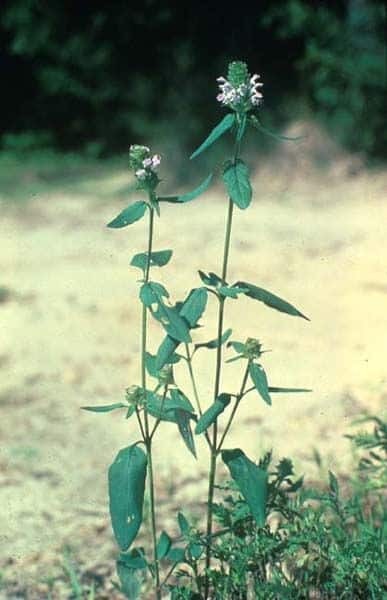
The Prunella vulgaris, commonly referred to as healall, is a robust weed that thrives in woodland environments. Its thick stems and leaves are characteristically adorned with minute, pin-like projections. This species exhibits remarkable growth potential, particularly when conditions are favorable, and can quickly dominate your garden. One of the significant challenges in managing healall is its extensive root system, which can extend deep into the soil. Despite these difficulties, the weed has been recognized for its medicinal properties, including anti-inflammatory capabilities that may be employed to alleviate swelling and minor skin irritations. Additionally, it has been utilized to address gastrointestinal issues.
Violet Woodsorrel
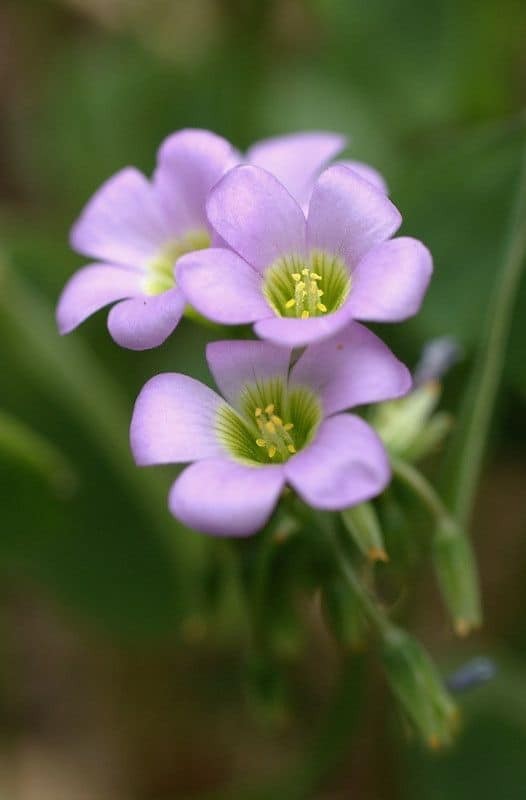
Oxalis violacea, commonly known as Violet Woodsorrel, is a native North American weed that boasts striking purple and yellow flowers. This invasive species has a unique characteristic – its rhizomes enable it to produce a rich source of nitrogen-fixing bacteria, enriching the soil for other plants to thrive. However, the creeping woodsorrel (a distinct yet equally problematic species) can quickly spread uncontrollably, overtaking flowerbeds, gardens, and vast areas of land with alarming speed. Unlike its more benign counterpart, this aggressive invader requires specialized herbicides for effective eradication, making it a formidable foe in any botanical battle.
Dove’s Foot Crane’s Bill
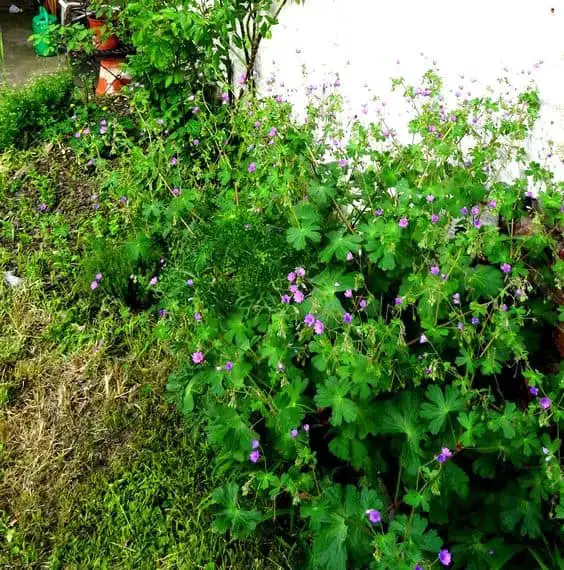
Geranium molle, also known as Dove’s Foot, is a perennial weed native to the Mediterranean region. Its global distribution spans all continents except Antarctica. One of its defining characteristics is the green stem adorned with tiny, sharp thorns.
Despite being an invasive species, Dove’s Foot doesn’t pose a threat to other plant life. However, its persistence makes it challenging to eradicate, often requiring significant investments in herbicides.
This resilient weed thrives in a variety of soils and climates, making it a formidable presence in many ecosystems.
Creeping Charlie
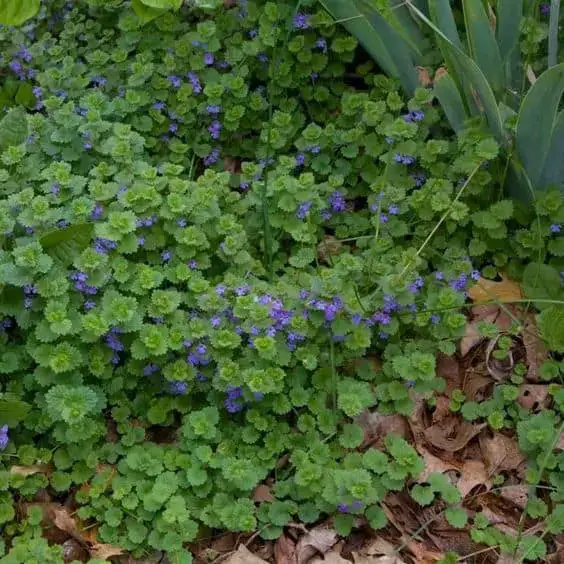
Glechoma hederacea, commonly referred to as Creeping Charlie, is a resilient weed that originates from Europe but has been naturalized in nearly every continent. This unwelcome invader is characterized by its vibrant purple flowers and tenacious nature, which makes it particularly challenging to eradicate. The plant’s robust roots run deep, allowing it to withstand many herbicides and weed killers. Despite its persistence, Creeping Charlie lacks any known industrial or medical applications.
Wild Violets

The delicate Viola Odorata, native to Europe and Asia, may appear as small plants that sprout near the ground or on tree bark with no discernible stems. However, don’t be fooled by their diminutive size – these weeds are notorious for their rapid growth and prolific seed dispersal, capable of spreading over vast areas in a short period. While some individuals cultivate the plant in controlled areas on their property to appreciate its aesthetic appeal, it’s essential to manage them effectively to prevent uncontrolled spreading.
Spotted Knapweed

The Centaurea maculosa, commonly known as Spotted Knapweed, exhibits a unique characteristic – it dies off during the winter months, only to re-emerge in subsequent seasons. While it shares some physical similarities with thistles, it belongs to a distinct genus and species. This seasonal weed is relatively widespread across North America, typically thriving in woodlands and grasslands. However, managing its spread can be a daunting task, as a single plant has the potential to produce tens of thousands of seeds. Furthermore, the Spotted Knapweed’s resistance to certain herbicides makes it challenging to eradicate entirely.
Spear Thistle
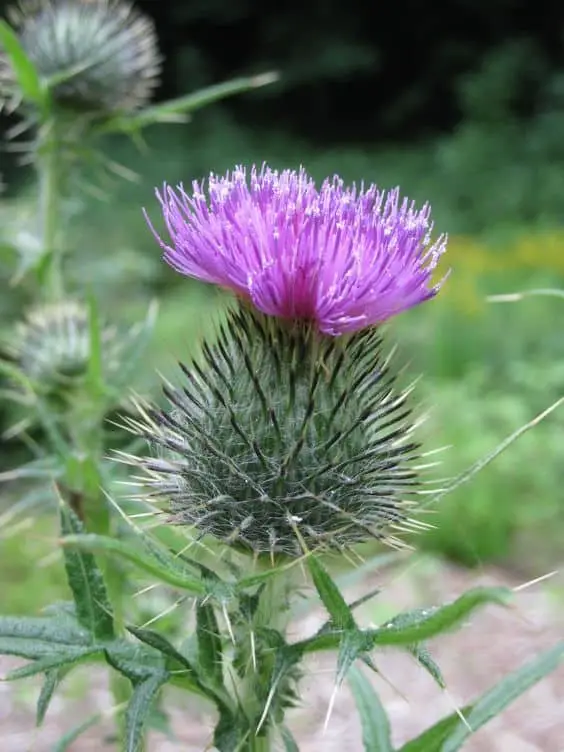
The Common Thistle (Cirsium vulgare) is a striking specimen that stands out from the crowd due to its distinctive purple blooms and spiny stems. As an wind-pollinated species, it can be challenging to regulate its growth. If left unmanaged, this thistle can rapidly spread, making it more problematic to control. The plant’s vibrant color attracts certain insects, such as butterflies, which further complicates efforts to contain its spread. Interestingly, the Common Thistle has been found to possess some medicinal properties, including the ability to alleviate stomach issues.
Black Nightshade
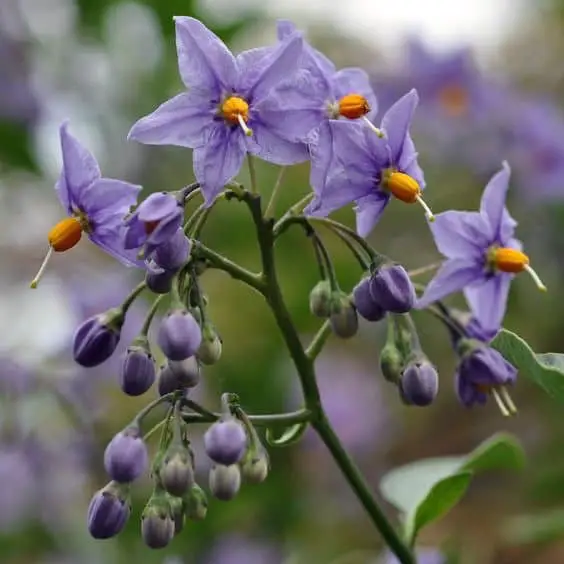
The Solanum nigrum, commonly referred to as Black Nightshades, is a perennial weed that thrives during the spring season. This invasive species rarely exceeds two feet in height, making it an unwelcome guest in gardens everywhere. Not only does it pose a threat to the health of your plants, but its toxic compounds can also have adverse effects on humans.While Black Nightshades bear a superficial resemblance to their edible counterparts, they are actually poisonous and should be avoided at all costs. To prevent them from taking over your garden, it’s essential to eradicate individual plants as soon as possible. Left unchecked, Black Nightshades will quickly spread and wreak havoc on your carefully cultivated landscape.
Purpletop Verbena
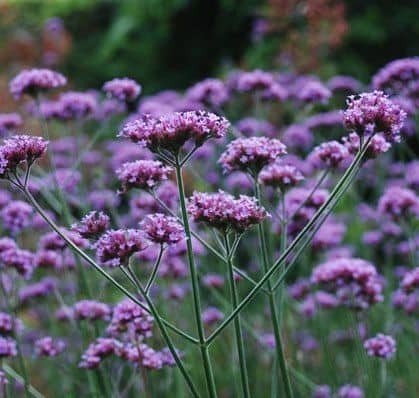
Verbena bonariensis, a native Australian weed, boasts stunning small flowers that bloom in clusters on sturdy stems. Its compact beauty makes it a popular choice for lining flower beds, adding a touch of elegance to any garden. However, with great beauty comes great responsibility – Verbena bonariensis can quickly spread out of control if left unchecked. As such, it’s essential to maintain its growth, as the plant has a tendency to take over gardens if allowed to thrive independently.
Conclusion
Invasive weeds bearing vibrant purple blooms pose a substantial threat to native ecosystems, causing irreparable harm to the delicate balance of local flora and fauna. It is crucial that we recognize and manage these invasive species to safeguard the well-being of indigenous plant life and ecosystems. For gardeners and landscapers seeking to identify and eradicate these unwanted invaders, this comprehensive list serves as a valuable resource.



